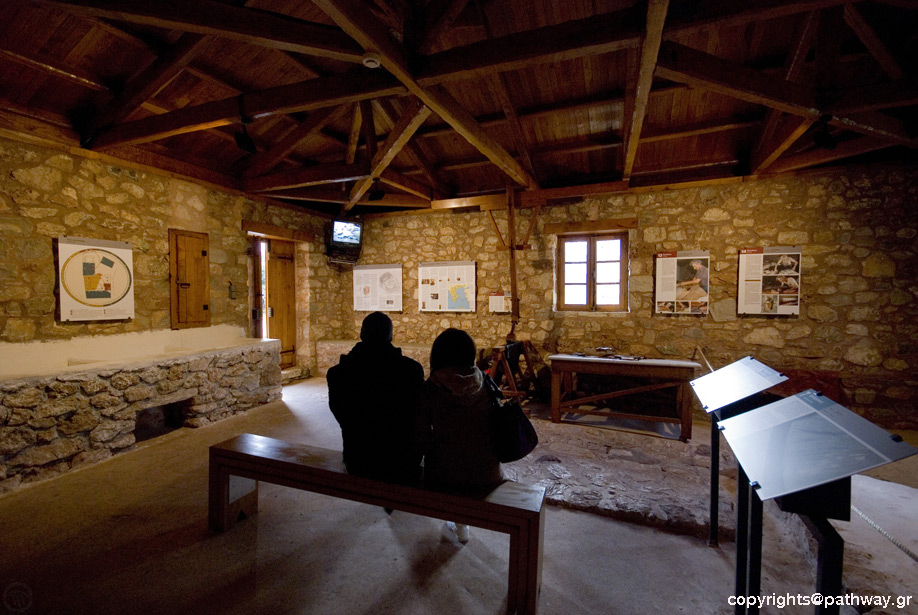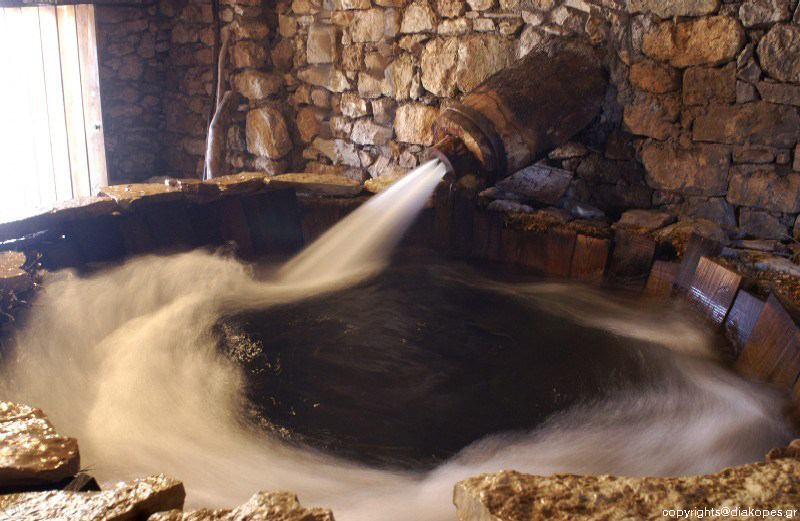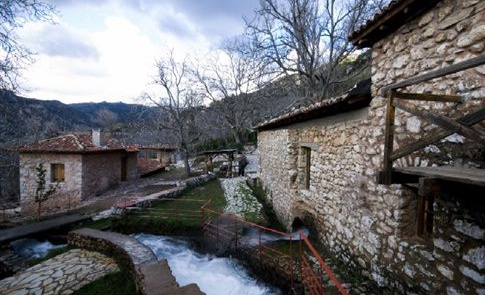A visit at the open-air Water Power Museum in Arcadia
The open-air Water Power Museum in Dimitsana village of Arcadia, is a thematic museum projecting the importance of water power within a traditional society and highlighting the use of water in the pre-industrial era as a primary energy source for the production of a variety of products. It covers an area of approximately one square kilometer where during the pre-industrial era the large mechanism and the other installations operated with the force of water streaming from the area’s spring called Kefalari.

The first building we see as we approach, houses a fulling tab and a flour mill. Dimitsana village used to have as many as twenty indoor and outdoor fulling tabs up to the mid 20th century which were used for washing textiles and woven woollen fabrics. Next to the building there is a well-restored flour mill with a horizontal paddle-wheel where the visitor can drop corn kernels into the grain hopper and watch how they are ground by the millstones and via the meal spout fall into the flour bin.
Just outside the mill, a simple shelter has been constructed to protect the raki still that was set up after the grape harvest each year to make tsipouro (a traditional Greek white alcoholic beverage) from the skins of the pressed grapes and which would function night and day for 3-4 days. Exactly opposite, there is a two-storey building with the tanner's house above and the tannery just below it.
A bit further below, we come across the tannery. The workshop's interior is divided into "zones" corresponding to the different stages of processing animal hides. The first is for the "waters", the liming and other general preparatory stages. The second one contains several tabs for tanning, as well as a well-ventilated zone used for hanging and drying the tanned hides in the shade. At the far end, we also see a well-lit corner which was used for the retanning and currying work.

The stone-paved path leads to a flat patio where there is a natural reservoir leading to the gunpowder mill. Dimitsana was one of the hundreds of villages which collected raw potassium nitrate from the 16th century onwards which they then handed to the Turks instead of paying them the proper tax. During the Greek Independence War against the Ottoman rule of the year 1821, the inhabitants of Dimitsana played a very important role in providing the necessary material for the war ammunition.



